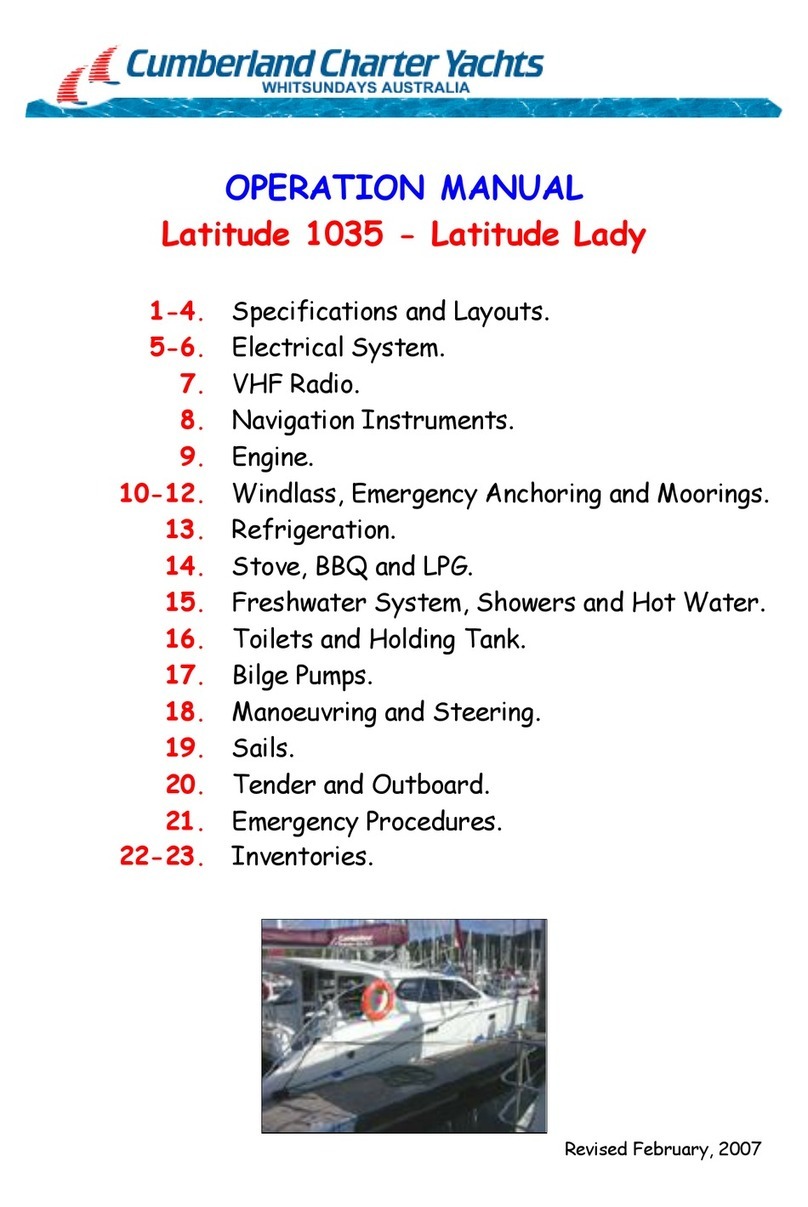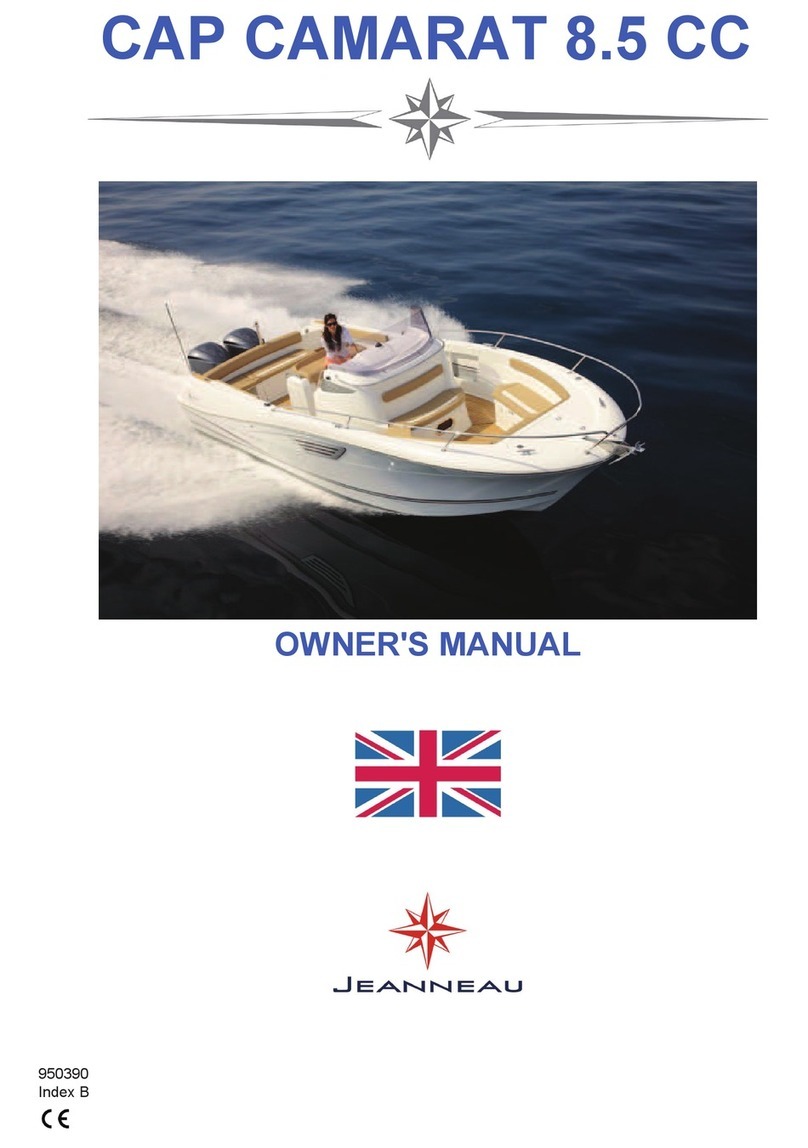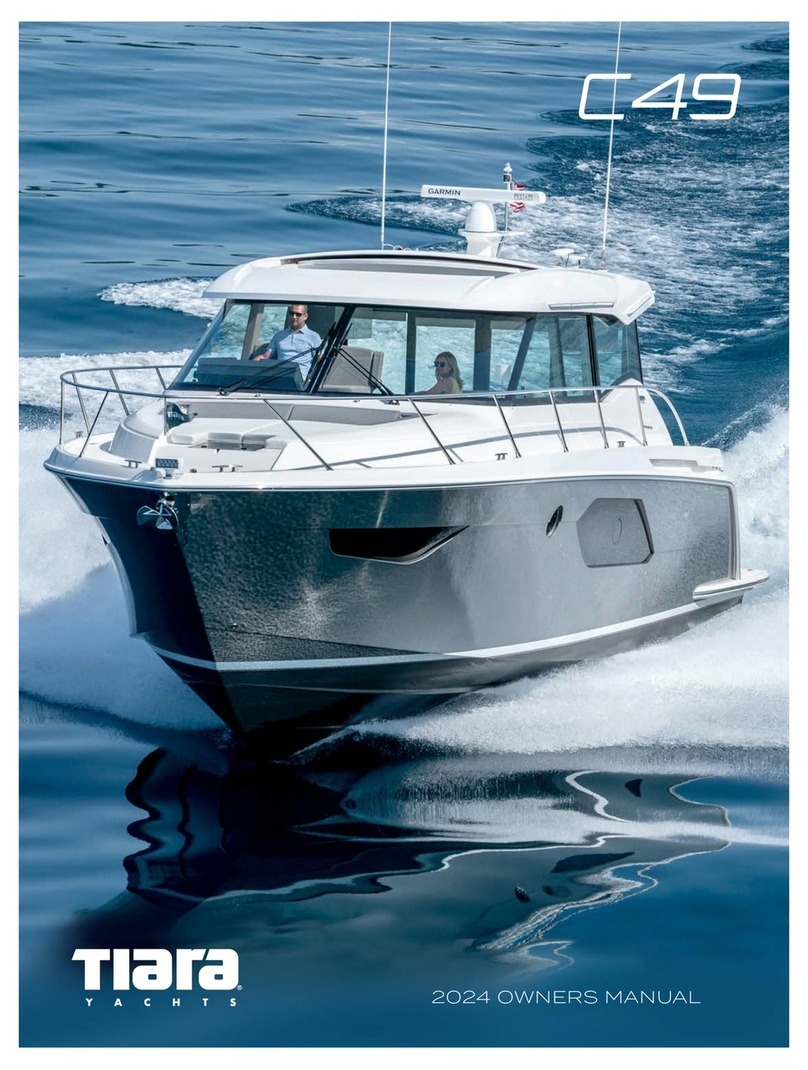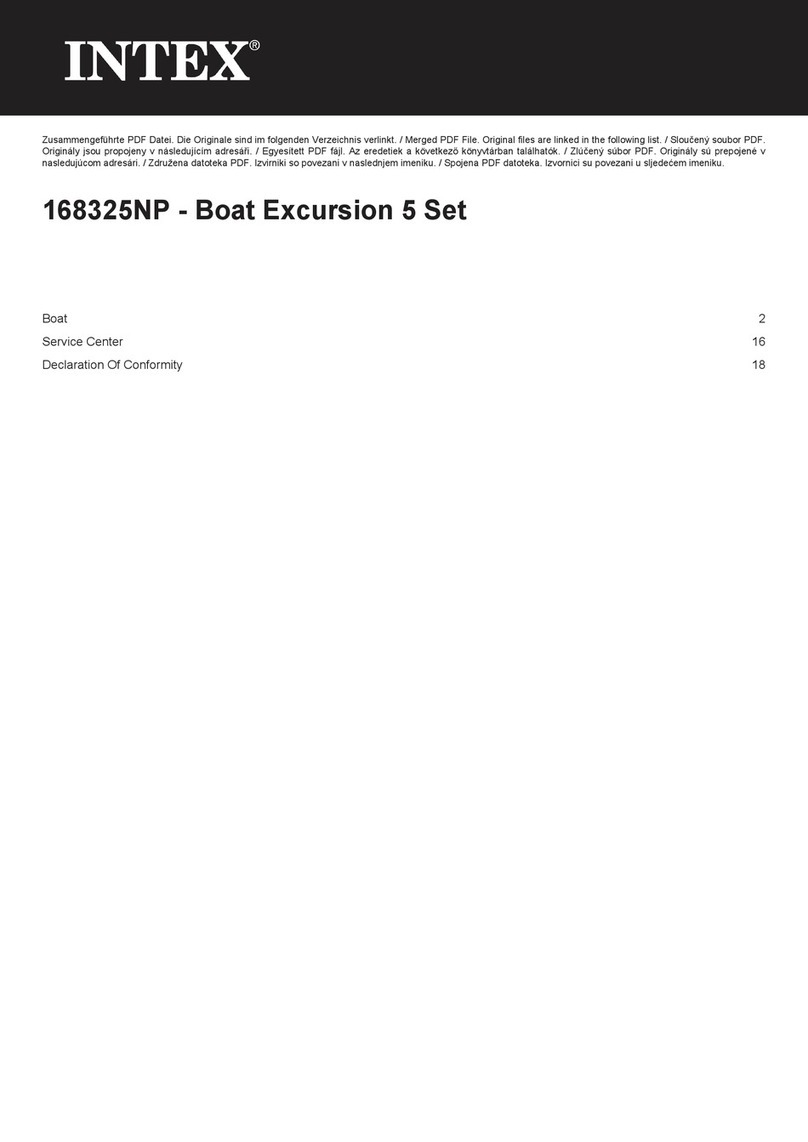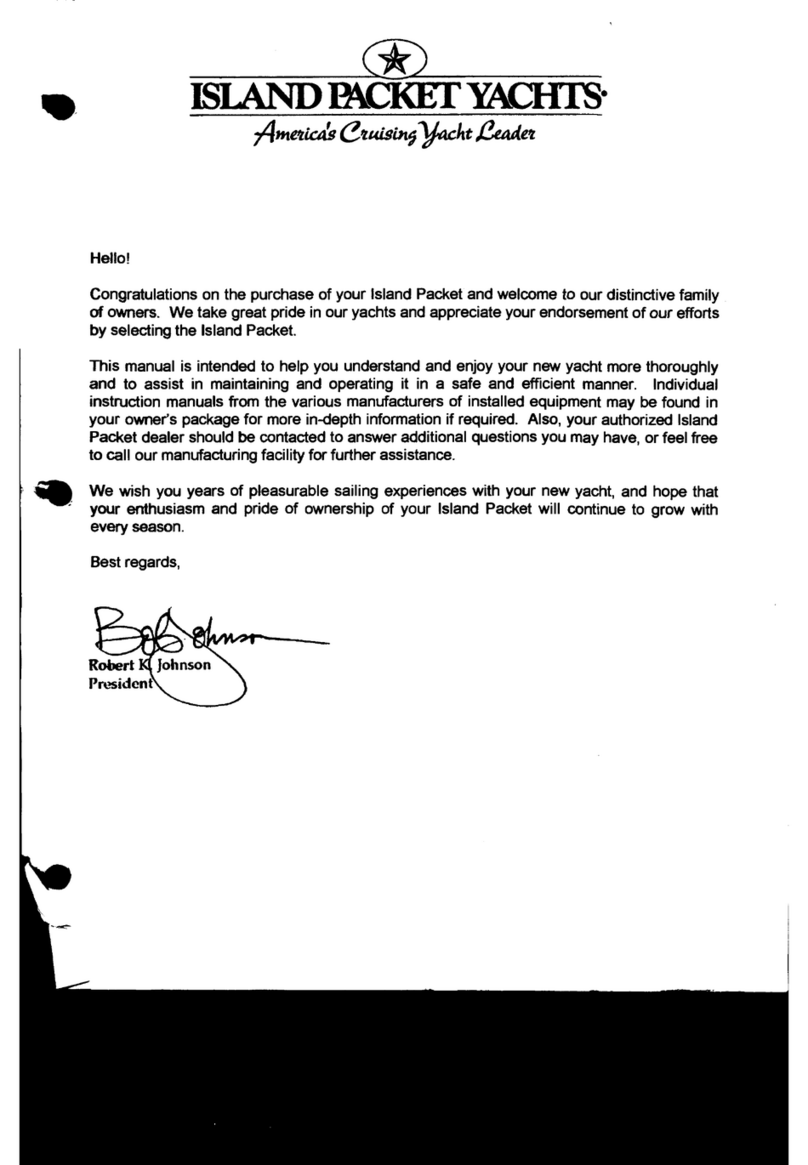OPERATION MANUAL
Mahe 36 - Skedaddle
Page 5 –Electrical System
Electrical System
Skedaddle has ample power with an easy to use 12 volt system with separate power supply for
the house and engines. She also utilises 240v shore power when in a marina for battery
charging and operating 240v appliances.
Note: Both engines must be run at 1500rpm for a minimum of TWO hours daily (60 minutes in
the morning, and 60 minutes after 3pm) to charge the house batteries.
No battery switches should be touched during charter unless in an emergency or advised to by
base.
All electrical lights and appliances are controlled from the circuit breaker switches at the
main electrical panel.
The batteries are recharged by the engines, the solar panel and shore power when in a marina
berth. Although this provides ample power it is necessary to keep power consumption down by
turning off lights or appliances when not in use.
Because Skedaddle has a totally separate engine battery system you will always have power to
start your engines even when the house batteries are flat.
Skedaddle has one engine battery for each engine and an isolation switch for each situated in
each engine box. These batteries are recharged by the engines and normal motoring will be
sufficient to recharge them. The house batteries are located in the port engine room with the
isolation switch. They are charged by the engines and the solar panels and also shore power when
in dock.
Battery switches are only for use in emergencies when instructed by your base.
Do not use the bridging switch located in the starboard engine room for extending the life of the
house battery power. This will flatten all batteries and you will not be able to start the engines.
Shore power
When you are in port, use the extension lead to plug into shore power. The lead is situated in the
cockpit locker. The battery charger turns on automatically. The Mastervolt panel on the
switchboard will give information about charging rates. The inverter is also bypassed and the
240v appliances will operate from shore power.
Power Readouts on Switchboard.
DC Meter –shows voltage, and the mastervolt panel shows charge information.
Inverter
The inverter provides 240v power from the 12 volt batteries to operate the power sockets. This
will power battery chargers and laptops etc only.









